179prs_NOTES FROM THE BAR
Goethe once said “Music is liquid architecture; Architecture is frozen music.”
Whilst there a long comparative history between music and architecture, these views music/architecture tended to consider the both more as a product (space-time, proportion, harmony etc) than as a process. Yet the way we make music/architecture today seems very similar with a high dependency on digital technologies. Looking at the way electronic music is currently made, there appears to be little frozen or static about the collage techniques, sampling and looping being deployed today. However whilst music is inclusive with references, sources and peers being declared, architecture maintains its mask or originality: few architects name their contemporary peers as being sources of inspiration…

000off_WHAT ANTIPODES: SPAINZ
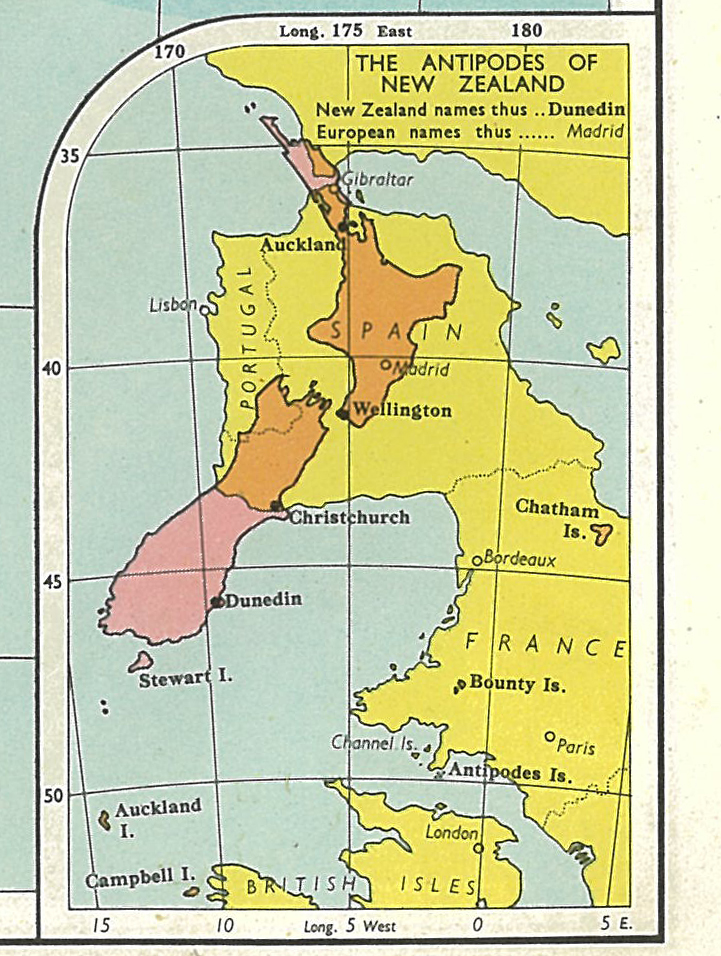
 Christmas represents one moment in the calendar to connect. In this sense WHAT_architecture looked at the social geographic connectivity of the office personnel starting with: SpaiNZ: the world spinning on a Spanish-New Zealand axis…
Christmas represents one moment in the calendar to connect. In this sense WHAT_architecture looked at the social geographic connectivity of the office personnel starting with: SpaiNZ: the world spinning on a Spanish-New Zealand axis…
127sho_FORMER SHOREDITCH STATION? A LOAD OF MODERN TOSS!
The scurrilous, global cult comic Modern Toss is the work of Jon Link and Mick Bunnage. As writers, cartoonists, and animators they’ve taken Modern Toss in many different directions- from challenging late night television to cutting edge advertising, and from international design magazines to greeting card racks. This year a Kickstarter campaign for their 10th anniversary book ‘A Decade in the Shithouse’ became the UK’s second biggest ever comic crowdfunding success, exceeding their target within 48 hours of going live. The book ‘A Decade in the Shithouse’ is out now. Their work features regularly in The Guardian, Private Eye magazine and The Sunday Times Style Magazine.
On Tuesday 9th December 2014, Jon and Mick dedicated their Planning Permission comic to the former Shoreditch Station.
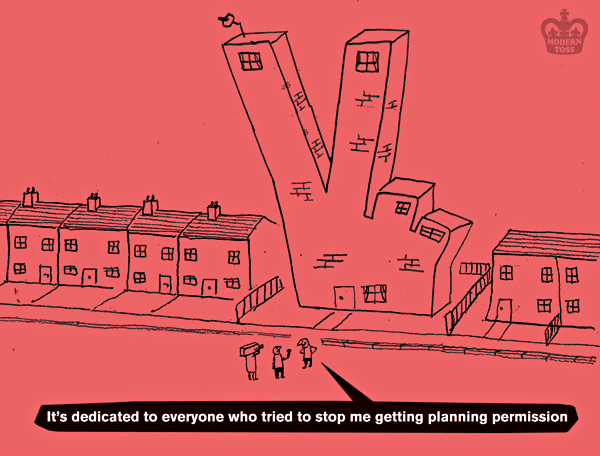
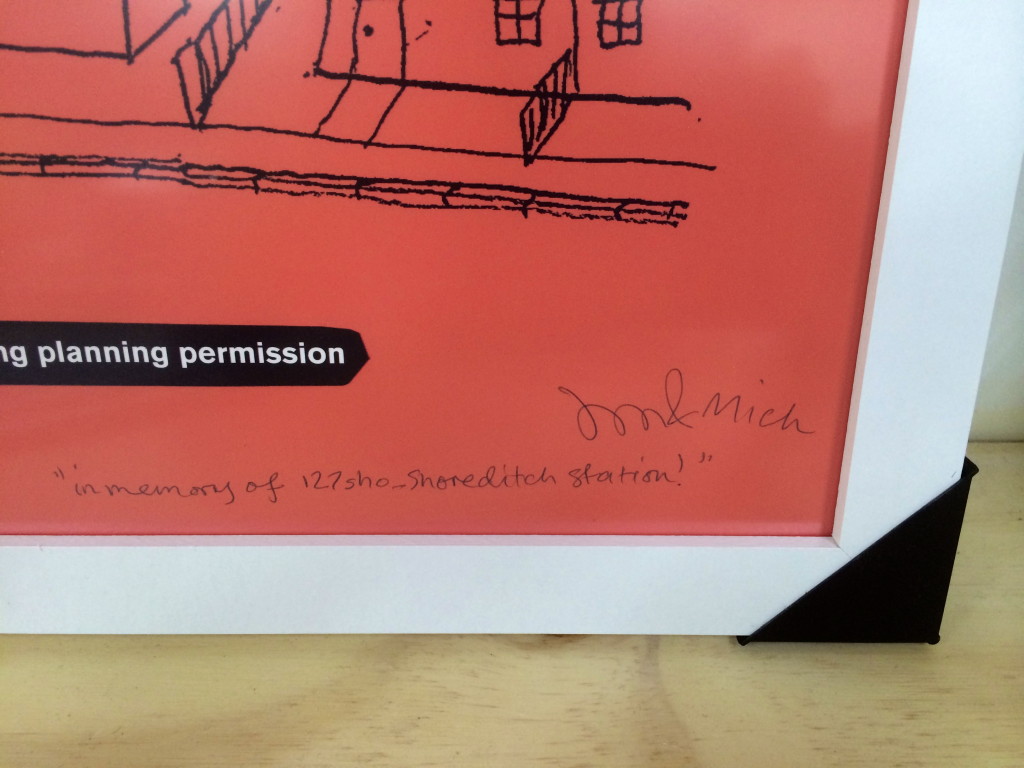



179prs_Rochester Won, Islington Nil
James Kirkup (not to be confused with James Ukip) writes in The Telegraph: “Perhaps the most telling thing about Emily Thornberry’s political demise is the defence she offered for her fatal Twitter picture of Dan Ware’s flag-draped house and a white van: She had “never seen” such a sight before, and thought it “absolutely amazing”, she said. That proclaimed ignorance, arguably, is more culpable than the sneering motives many have imputed to Ms Thornberry. An elected member of the House of Commons finds the habits of the English working class alien to the point of fascination. The Thornberry saga is, initially, a problem for her party, Labour, which is struggling to hold on to voters who drive vans, like football, drink beer and display the cross of St George without embarrassment or irony. But it also says something about our politics as a whole, about the dominance of the middle classes and their values, to the exclusion of those lower down the socio-economic order. In 1997, John Prescott suggested that “We are all middle class now”, but despite an economic shift from manual to intellectual labour, quite a lot of people in the UK can still be described as working class: around 40 per cent in all.”
Emily Thornberry is the Labour MP for Islington South and Finsbury. Her current predicament merely reinforces data produced with The Information Capital that those living in middle class Islington, presumably white van, flag free to Thornberry (presumably not a Gooner), are the unhappiest of citizens of London. Across the pond even Capital America has said through Franklin D. Roosevelt: “Happiness is not in the mere possession of money; it lies in the joy of achievement, in the thrill of creative effort.” In the pursuit of happiness, we need to trade material for social wealth. [+] [+] [+]
This comment was written in an East London tower block.

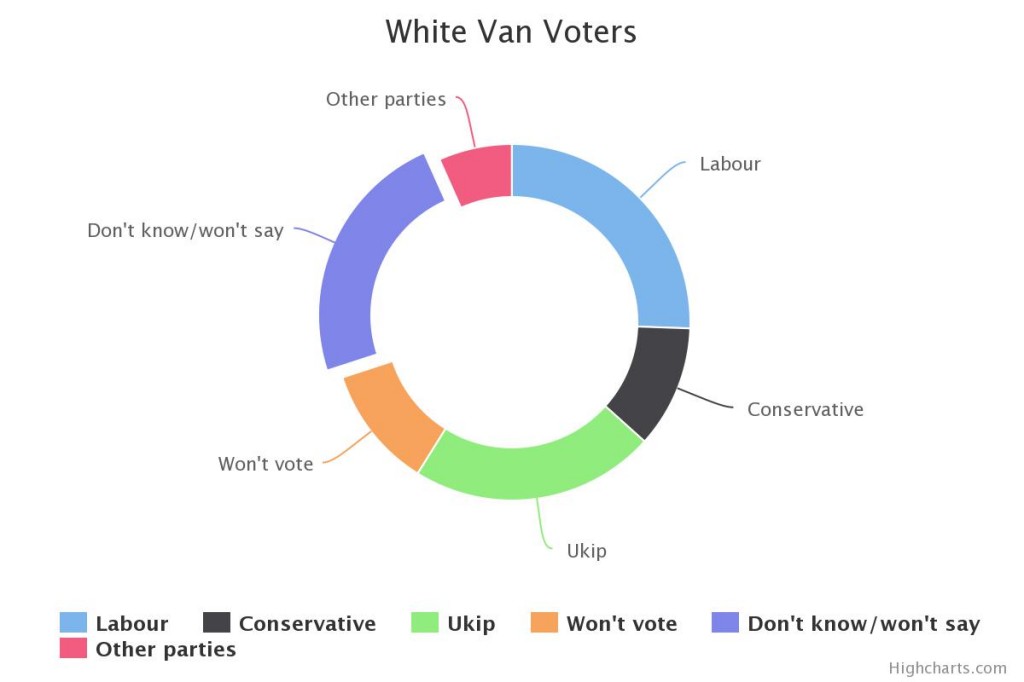
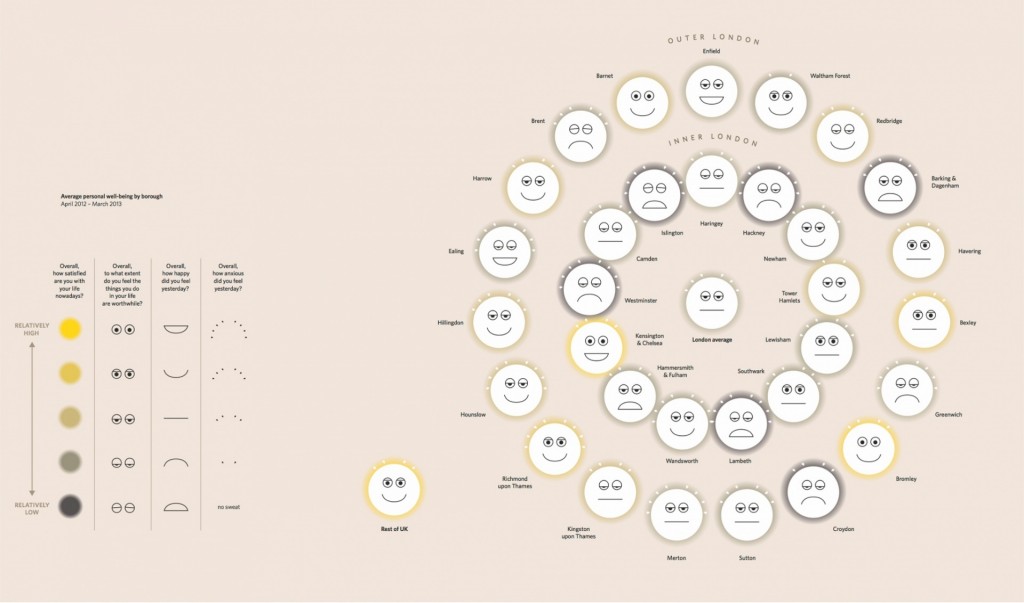




000off_BLIND-FOLDED CRITIQUE / DARK-ITECTURE
blablablarchitecture is talking buildings. This posits listening to architecture over looking at architecture.
‘Blindfold Critique’ is a new way of looking at architecture. Or rather not looking at architecture in that it goes beyond the visual and into the aural. An architect or critic is blindfolded, and taken to an architectural site, where they are asked to give their critique as they are led through the architecture. These critiques have been recorded and edited by Joshua David Lynch and are presented here as audio files (and best listened to through headphones).
Blindfold Critiques where done as part of the 2013 Sydney Architecture Festival and were presented as part of the Expanded Architecture at The Rocks Exhibition. 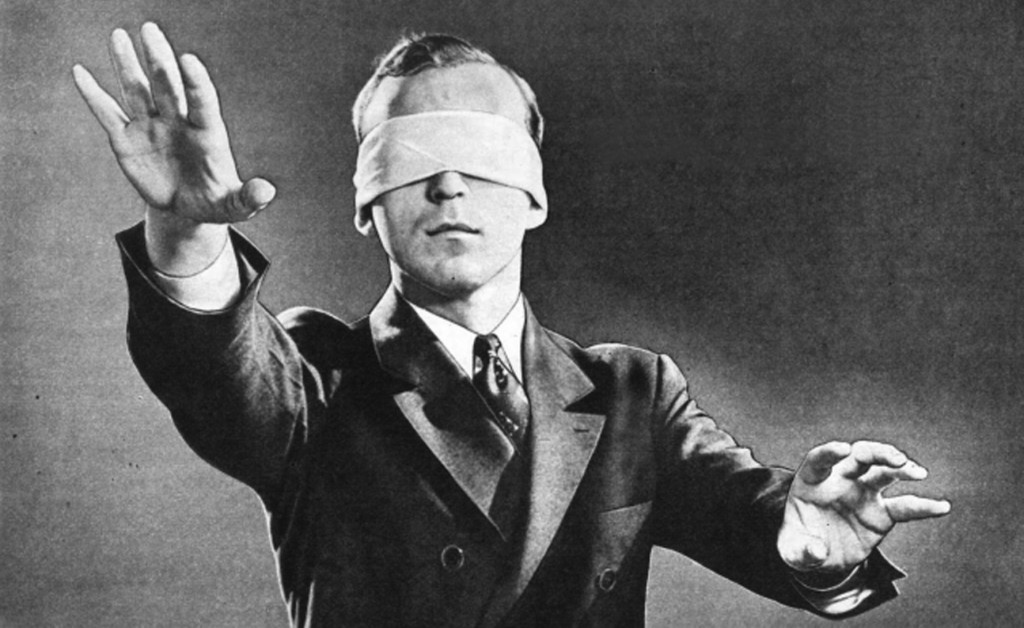 Following on from BlindFold Critiques is this essay Dark-itecture by SOPHIA BANNERT which won the AJ Writing Prize 2014. Architecture doesn’t always engage all of our senses, and tends to rely heavily on sight; appearance rules over experience. Architecture continues to be theorised and practised as an art form of the eye. As a result, it is dominated by considerations such as visual harmony, the divine proportion and the golden ratio. Throughout history, buildings have mostly been about visual seduction to be marvelled at, rather than skilful arrangements of materials and sensations, to create comfortable and inspiring places for everyday use. It’s right that they should be visually stimulating, but let’s not forget our other senses. With the right formula appealing to all of our senses, architecture holds the power to influence your feelings towards a space, your mood, and how you feel about yourself, on a subconscious level. A good architect should be aware of this. Danish architect Steen Eiler Rasmussen said the job of the architect is to ‘remain anonymously in the background, resembling the theatrical producer. He composes the music others will play.’ Composing inspirational and stimulating atmospheres is more effective when an orchestra of senses is involved. This led me to question how rich spaces can be when we take something as predominant as vision out of the equation. A visit to the French restaurant Dans le Noir? provided me with an ensemble of sensory experiences by removing my sense of sight, thus heightening my other senses. The restaurant is unique in the fact that the waiters are visually impaired. The guest is served in complete darkness which reignites one’s sensory and spatial awareness. For once, the blind can act as your eyes, guiding you through the (step-free) experience. The digital revolution makes it difficult to pay attention to the present moment. Therefore, no electronic devices are allowed in, which could serve as distractions. My initial reaction was one of disorientation and unease; deprivation of sight can be frightening. Our eyes are responsible for 80 per cent of the information our brain receives. This makes it the most vital sensory input of the human body. Take that away and the brain is forced to rely on its other senses. Sound is the second most important sense and without sight I was profoundly aware of the acoustics: melodic jazz in the background, mixed with conversational murmurings. Carpet beneath my feet, I reached my hand out and touched a wall which was divided, the top half seemed to have a material covering, and halfway down I felt what I thought must have been heavy wallpaper. The table cloth felt like linen, and I sat in a leathery chair. The room seemed intimate and private, with few other people. Surprisingly the room actually served 60 people. How interesting that when sound is muted and sight removed, one’s spatial awareness can be so wrong. During the meal, I become acutely more aware of the way I was using my voice in conversation. (How do you convey a smile in the dark?) Pitch, speed, volume and tone of voice were suddenly crucial for communication. (Nodding my head in agreement was a wasted gesture – yet I still found myself doing it.) Conversation became an art once more and I felt it was more meaningful. I felt at ease and confident. Visual limitations became liberating. Being became much simpler. I entered a space devoid of vanity; shyness conquered. In this room sensory perception was magnified and, with the removal of sight, style became meaningless. Juhani Pallasmaa once said: ‘Architecture is a slow and silent background phenomenon that frames human experience and gives it specific horizons of meaning. This silent but perpetual presence is the special monumental power of the art of architecture.’ If architects were blind, spaces would be more ergonomic and logical; design of the human experience would be crucial. The architecture here is the feeling created. The light scent of food increased my appetite and anticipation of what I was about to eat. Odours are chemicals which powerfully affect our brain function; influencing mood shifts and triggering involuntary memories and feelings. The smell of good food triggered, for me, associations with homely comfortable memories, which furthered the relaxed ambience. My entire perception of time disappeared whilst I was in the room. Can a space alter the way time is perceived? Neuroscientist David Eagleman states that when we hear enjoyable sounds and experience new sensations, the greater attention we pay leads to perception of a longer period of time. ‘When familiar information is processed, this doesn’t take much time at all. New information however, is a bit slower to process and makes time feel elongated.’ The concept of a space altering our perception of time is thought provoking. We live such busy lives; it would be wonderful to be able to create the illusion of slowing time down to enjoy the present. Without romanticising being blind, my visit to Dans le Noir? raised my awareness of the importance of our environments, and the way in which we perceive them, in a way no other place could, by allowing one’s other senses to fully engage in the environment – without the overriding reliability on sight. The genius-loci or spirit of place is easier to feel than see. Our over-connected environments are becoming sensory impoverished and lack inspirational non-visual stimuli. Modern digital culture can conflict with meaningful human communication. Can we, as architects, address this isolation by creating spaces in which people can reconnect on a more intimate level? To open a restaurant in which one dines in complete darkness was a courageous act, but in doing so they have provided the diner with a banquet of sensory stimuli. It’s an irony that if a sense is taken away, one can become more sensually aware. To quote Marcel Proust: ‘The real act of discovery consists not in finding new lands, but in seeing with new eyes.’ Guests leave with a new found multisensory awareness, to perhaps rediscover something lost.’
Following on from BlindFold Critiques is this essay Dark-itecture by SOPHIA BANNERT which won the AJ Writing Prize 2014. Architecture doesn’t always engage all of our senses, and tends to rely heavily on sight; appearance rules over experience. Architecture continues to be theorised and practised as an art form of the eye. As a result, it is dominated by considerations such as visual harmony, the divine proportion and the golden ratio. Throughout history, buildings have mostly been about visual seduction to be marvelled at, rather than skilful arrangements of materials and sensations, to create comfortable and inspiring places for everyday use. It’s right that they should be visually stimulating, but let’s not forget our other senses. With the right formula appealing to all of our senses, architecture holds the power to influence your feelings towards a space, your mood, and how you feel about yourself, on a subconscious level. A good architect should be aware of this. Danish architect Steen Eiler Rasmussen said the job of the architect is to ‘remain anonymously in the background, resembling the theatrical producer. He composes the music others will play.’ Composing inspirational and stimulating atmospheres is more effective when an orchestra of senses is involved. This led me to question how rich spaces can be when we take something as predominant as vision out of the equation. A visit to the French restaurant Dans le Noir? provided me with an ensemble of sensory experiences by removing my sense of sight, thus heightening my other senses. The restaurant is unique in the fact that the waiters are visually impaired. The guest is served in complete darkness which reignites one’s sensory and spatial awareness. For once, the blind can act as your eyes, guiding you through the (step-free) experience. The digital revolution makes it difficult to pay attention to the present moment. Therefore, no electronic devices are allowed in, which could serve as distractions. My initial reaction was one of disorientation and unease; deprivation of sight can be frightening. Our eyes are responsible for 80 per cent of the information our brain receives. This makes it the most vital sensory input of the human body. Take that away and the brain is forced to rely on its other senses. Sound is the second most important sense and without sight I was profoundly aware of the acoustics: melodic jazz in the background, mixed with conversational murmurings. Carpet beneath my feet, I reached my hand out and touched a wall which was divided, the top half seemed to have a material covering, and halfway down I felt what I thought must have been heavy wallpaper. The table cloth felt like linen, and I sat in a leathery chair. The room seemed intimate and private, with few other people. Surprisingly the room actually served 60 people. How interesting that when sound is muted and sight removed, one’s spatial awareness can be so wrong. During the meal, I become acutely more aware of the way I was using my voice in conversation. (How do you convey a smile in the dark?) Pitch, speed, volume and tone of voice were suddenly crucial for communication. (Nodding my head in agreement was a wasted gesture – yet I still found myself doing it.) Conversation became an art once more and I felt it was more meaningful. I felt at ease and confident. Visual limitations became liberating. Being became much simpler. I entered a space devoid of vanity; shyness conquered. In this room sensory perception was magnified and, with the removal of sight, style became meaningless. Juhani Pallasmaa once said: ‘Architecture is a slow and silent background phenomenon that frames human experience and gives it specific horizons of meaning. This silent but perpetual presence is the special monumental power of the art of architecture.’ If architects were blind, spaces would be more ergonomic and logical; design of the human experience would be crucial. The architecture here is the feeling created. The light scent of food increased my appetite and anticipation of what I was about to eat. Odours are chemicals which powerfully affect our brain function; influencing mood shifts and triggering involuntary memories and feelings. The smell of good food triggered, for me, associations with homely comfortable memories, which furthered the relaxed ambience. My entire perception of time disappeared whilst I was in the room. Can a space alter the way time is perceived? Neuroscientist David Eagleman states that when we hear enjoyable sounds and experience new sensations, the greater attention we pay leads to perception of a longer period of time. ‘When familiar information is processed, this doesn’t take much time at all. New information however, is a bit slower to process and makes time feel elongated.’ The concept of a space altering our perception of time is thought provoking. We live such busy lives; it would be wonderful to be able to create the illusion of slowing time down to enjoy the present. Without romanticising being blind, my visit to Dans le Noir? raised my awareness of the importance of our environments, and the way in which we perceive them, in a way no other place could, by allowing one’s other senses to fully engage in the environment – without the overriding reliability on sight. The genius-loci or spirit of place is easier to feel than see. Our over-connected environments are becoming sensory impoverished and lack inspirational non-visual stimuli. Modern digital culture can conflict with meaningful human communication. Can we, as architects, address this isolation by creating spaces in which people can reconnect on a more intimate level? To open a restaurant in which one dines in complete darkness was a courageous act, but in doing so they have provided the diner with a banquet of sensory stimuli. It’s an irony that if a sense is taken away, one can become more sensually aware. To quote Marcel Proust: ‘The real act of discovery consists not in finding new lands, but in seeing with new eyes.’ Guests leave with a new found multisensory awareness, to perhaps rediscover something lost.’
 Following on from BlindFold Critiques is this essay Dark-itecture by SOPHIA BANNERT which won the AJ Writing Prize 2014. Architecture doesn’t always engage all of our senses, and tends to rely heavily on sight; appearance rules over experience. Architecture continues to be theorised and practised as an art form of the eye. As a result, it is dominated by considerations such as visual harmony, the divine proportion and the golden ratio. Throughout history, buildings have mostly been about visual seduction to be marvelled at, rather than skilful arrangements of materials and sensations, to create comfortable and inspiring places for everyday use. It’s right that they should be visually stimulating, but let’s not forget our other senses. With the right formula appealing to all of our senses, architecture holds the power to influence your feelings towards a space, your mood, and how you feel about yourself, on a subconscious level. A good architect should be aware of this. Danish architect Steen Eiler Rasmussen said the job of the architect is to ‘remain anonymously in the background, resembling the theatrical producer. He composes the music others will play.’ Composing inspirational and stimulating atmospheres is more effective when an orchestra of senses is involved. This led me to question how rich spaces can be when we take something as predominant as vision out of the equation. A visit to the French restaurant Dans le Noir? provided me with an ensemble of sensory experiences by removing my sense of sight, thus heightening my other senses. The restaurant is unique in the fact that the waiters are visually impaired. The guest is served in complete darkness which reignites one’s sensory and spatial awareness. For once, the blind can act as your eyes, guiding you through the (step-free) experience. The digital revolution makes it difficult to pay attention to the present moment. Therefore, no electronic devices are allowed in, which could serve as distractions. My initial reaction was one of disorientation and unease; deprivation of sight can be frightening. Our eyes are responsible for 80 per cent of the information our brain receives. This makes it the most vital sensory input of the human body. Take that away and the brain is forced to rely on its other senses. Sound is the second most important sense and without sight I was profoundly aware of the acoustics: melodic jazz in the background, mixed with conversational murmurings. Carpet beneath my feet, I reached my hand out and touched a wall which was divided, the top half seemed to have a material covering, and halfway down I felt what I thought must have been heavy wallpaper. The table cloth felt like linen, and I sat in a leathery chair. The room seemed intimate and private, with few other people. Surprisingly the room actually served 60 people. How interesting that when sound is muted and sight removed, one’s spatial awareness can be so wrong. During the meal, I become acutely more aware of the way I was using my voice in conversation. (How do you convey a smile in the dark?) Pitch, speed, volume and tone of voice were suddenly crucial for communication. (Nodding my head in agreement was a wasted gesture – yet I still found myself doing it.) Conversation became an art once more and I felt it was more meaningful. I felt at ease and confident. Visual limitations became liberating. Being became much simpler. I entered a space devoid of vanity; shyness conquered. In this room sensory perception was magnified and, with the removal of sight, style became meaningless. Juhani Pallasmaa once said: ‘Architecture is a slow and silent background phenomenon that frames human experience and gives it specific horizons of meaning. This silent but perpetual presence is the special monumental power of the art of architecture.’ If architects were blind, spaces would be more ergonomic and logical; design of the human experience would be crucial. The architecture here is the feeling created. The light scent of food increased my appetite and anticipation of what I was about to eat. Odours are chemicals which powerfully affect our brain function; influencing mood shifts and triggering involuntary memories and feelings. The smell of good food triggered, for me, associations with homely comfortable memories, which furthered the relaxed ambience. My entire perception of time disappeared whilst I was in the room. Can a space alter the way time is perceived? Neuroscientist David Eagleman states that when we hear enjoyable sounds and experience new sensations, the greater attention we pay leads to perception of a longer period of time. ‘When familiar information is processed, this doesn’t take much time at all. New information however, is a bit slower to process and makes time feel elongated.’ The concept of a space altering our perception of time is thought provoking. We live such busy lives; it would be wonderful to be able to create the illusion of slowing time down to enjoy the present. Without romanticising being blind, my visit to Dans le Noir? raised my awareness of the importance of our environments, and the way in which we perceive them, in a way no other place could, by allowing one’s other senses to fully engage in the environment – without the overriding reliability on sight. The genius-loci or spirit of place is easier to feel than see. Our over-connected environments are becoming sensory impoverished and lack inspirational non-visual stimuli. Modern digital culture can conflict with meaningful human communication. Can we, as architects, address this isolation by creating spaces in which people can reconnect on a more intimate level? To open a restaurant in which one dines in complete darkness was a courageous act, but in doing so they have provided the diner with a banquet of sensory stimuli. It’s an irony that if a sense is taken away, one can become more sensually aware. To quote Marcel Proust: ‘The real act of discovery consists not in finding new lands, but in seeing with new eyes.’ Guests leave with a new found multisensory awareness, to perhaps rediscover something lost.’
Following on from BlindFold Critiques is this essay Dark-itecture by SOPHIA BANNERT which won the AJ Writing Prize 2014. Architecture doesn’t always engage all of our senses, and tends to rely heavily on sight; appearance rules over experience. Architecture continues to be theorised and practised as an art form of the eye. As a result, it is dominated by considerations such as visual harmony, the divine proportion and the golden ratio. Throughout history, buildings have mostly been about visual seduction to be marvelled at, rather than skilful arrangements of materials and sensations, to create comfortable and inspiring places for everyday use. It’s right that they should be visually stimulating, but let’s not forget our other senses. With the right formula appealing to all of our senses, architecture holds the power to influence your feelings towards a space, your mood, and how you feel about yourself, on a subconscious level. A good architect should be aware of this. Danish architect Steen Eiler Rasmussen said the job of the architect is to ‘remain anonymously in the background, resembling the theatrical producer. He composes the music others will play.’ Composing inspirational and stimulating atmospheres is more effective when an orchestra of senses is involved. This led me to question how rich spaces can be when we take something as predominant as vision out of the equation. A visit to the French restaurant Dans le Noir? provided me with an ensemble of sensory experiences by removing my sense of sight, thus heightening my other senses. The restaurant is unique in the fact that the waiters are visually impaired. The guest is served in complete darkness which reignites one’s sensory and spatial awareness. For once, the blind can act as your eyes, guiding you through the (step-free) experience. The digital revolution makes it difficult to pay attention to the present moment. Therefore, no electronic devices are allowed in, which could serve as distractions. My initial reaction was one of disorientation and unease; deprivation of sight can be frightening. Our eyes are responsible for 80 per cent of the information our brain receives. This makes it the most vital sensory input of the human body. Take that away and the brain is forced to rely on its other senses. Sound is the second most important sense and without sight I was profoundly aware of the acoustics: melodic jazz in the background, mixed with conversational murmurings. Carpet beneath my feet, I reached my hand out and touched a wall which was divided, the top half seemed to have a material covering, and halfway down I felt what I thought must have been heavy wallpaper. The table cloth felt like linen, and I sat in a leathery chair. The room seemed intimate and private, with few other people. Surprisingly the room actually served 60 people. How interesting that when sound is muted and sight removed, one’s spatial awareness can be so wrong. During the meal, I become acutely more aware of the way I was using my voice in conversation. (How do you convey a smile in the dark?) Pitch, speed, volume and tone of voice were suddenly crucial for communication. (Nodding my head in agreement was a wasted gesture – yet I still found myself doing it.) Conversation became an art once more and I felt it was more meaningful. I felt at ease and confident. Visual limitations became liberating. Being became much simpler. I entered a space devoid of vanity; shyness conquered. In this room sensory perception was magnified and, with the removal of sight, style became meaningless. Juhani Pallasmaa once said: ‘Architecture is a slow and silent background phenomenon that frames human experience and gives it specific horizons of meaning. This silent but perpetual presence is the special monumental power of the art of architecture.’ If architects were blind, spaces would be more ergonomic and logical; design of the human experience would be crucial. The architecture here is the feeling created. The light scent of food increased my appetite and anticipation of what I was about to eat. Odours are chemicals which powerfully affect our brain function; influencing mood shifts and triggering involuntary memories and feelings. The smell of good food triggered, for me, associations with homely comfortable memories, which furthered the relaxed ambience. My entire perception of time disappeared whilst I was in the room. Can a space alter the way time is perceived? Neuroscientist David Eagleman states that when we hear enjoyable sounds and experience new sensations, the greater attention we pay leads to perception of a longer period of time. ‘When familiar information is processed, this doesn’t take much time at all. New information however, is a bit slower to process and makes time feel elongated.’ The concept of a space altering our perception of time is thought provoking. We live such busy lives; it would be wonderful to be able to create the illusion of slowing time down to enjoy the present. Without romanticising being blind, my visit to Dans le Noir? raised my awareness of the importance of our environments, and the way in which we perceive them, in a way no other place could, by allowing one’s other senses to fully engage in the environment – without the overriding reliability on sight. The genius-loci or spirit of place is easier to feel than see. Our over-connected environments are becoming sensory impoverished and lack inspirational non-visual stimuli. Modern digital culture can conflict with meaningful human communication. Can we, as architects, address this isolation by creating spaces in which people can reconnect on a more intimate level? To open a restaurant in which one dines in complete darkness was a courageous act, but in doing so they have provided the diner with a banquet of sensory stimuli. It’s an irony that if a sense is taken away, one can become more sensually aware. To quote Marcel Proust: ‘The real act of discovery consists not in finding new lands, but in seeing with new eyes.’ Guests leave with a new found multisensory awareness, to perhaps rediscover something lost.’
179prs_I AM AN ARCHITEKT
Recent discussions here on blablablarchitecture about the empire call to mind the colonisation of the architectural profession. This is a game of architectural registration regulated by EU rules. In order to practice in the UK as an Architect (a protected word under ARB regulations) one must transfer acceptable qualifications to Britain (RIBA Parts 1-3). This transference however merely exposes the divergence between EU Member states whereby in some EU countries, TBC, an academic qualification simultaneously confers professional registration whereas in other EU countries, say Poland, one has to undertake 3y of professional experience in order to merely sit the registration examination. EU laws attempt to regulate thereby make equal but some countries are more equal than others in the registration of an Architect. Or Architekt. WHAT_architecture thus operates a performance based metric in the determination of qualification. You aren’t what you say you are, you are what you demonstrate.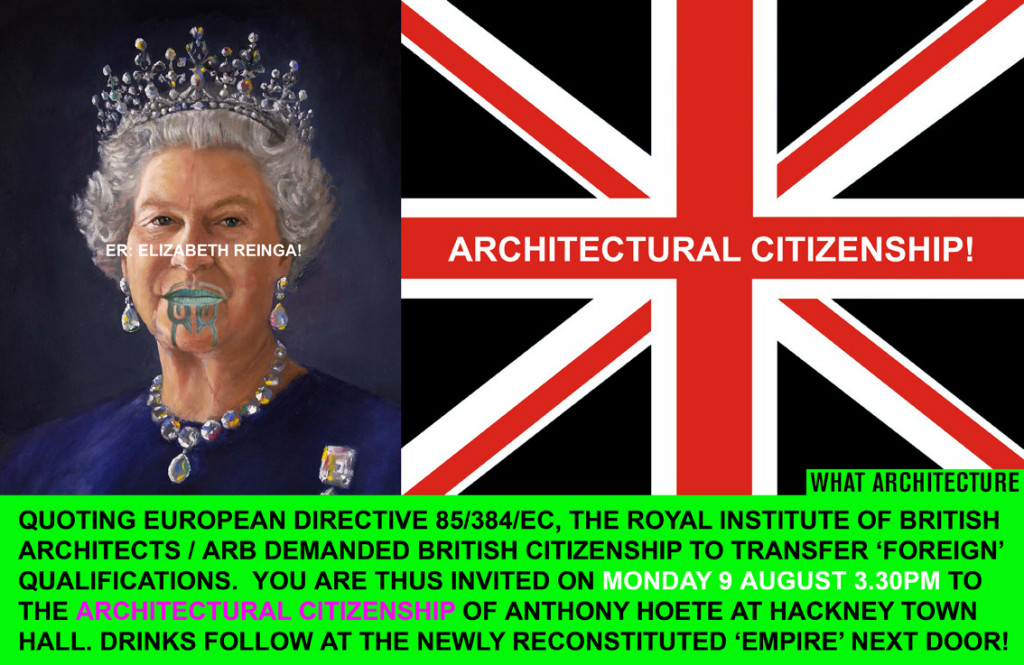
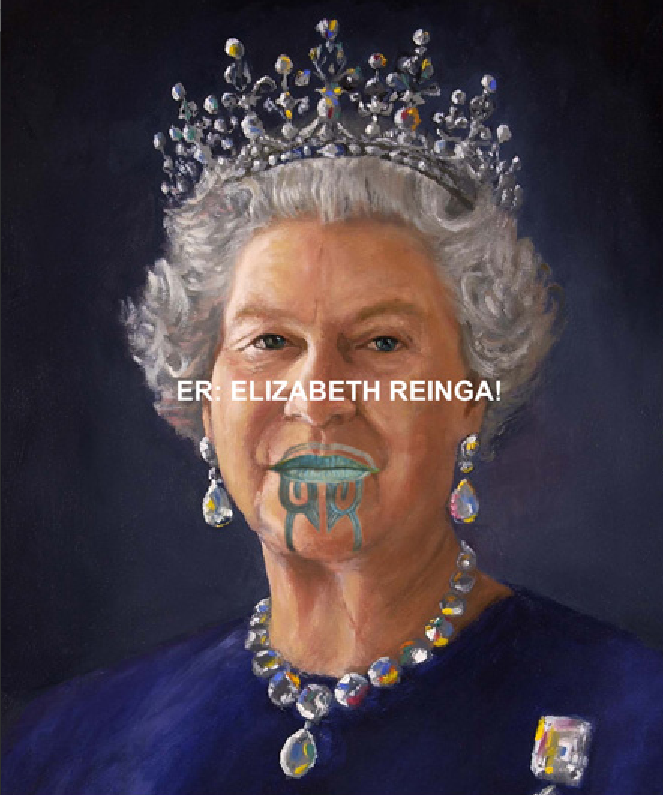



000OFF_RAINY LONDON: A CLICHé: THE RAIN IN SPAIN FALLS HEAVIER
“Rainy London”? We compared precipitation in London with other cities to unlock this tired cliché of damp London and realised that it’s completely a wrong cliche. In this case below, we have as an example, Seville, one of the hottest cities of Spain, where has a heavier maximum precipitation. For further weather information, check this website: http://www.worldweatheronline.com/
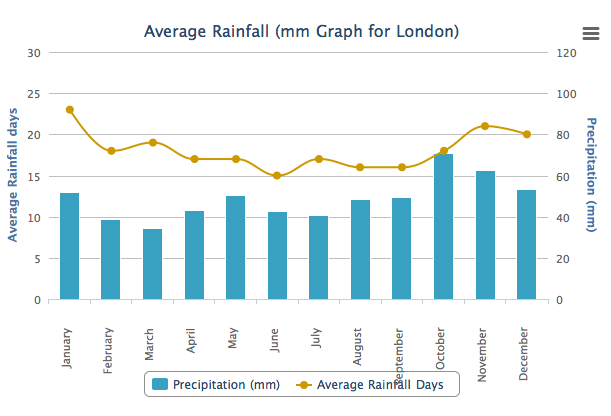
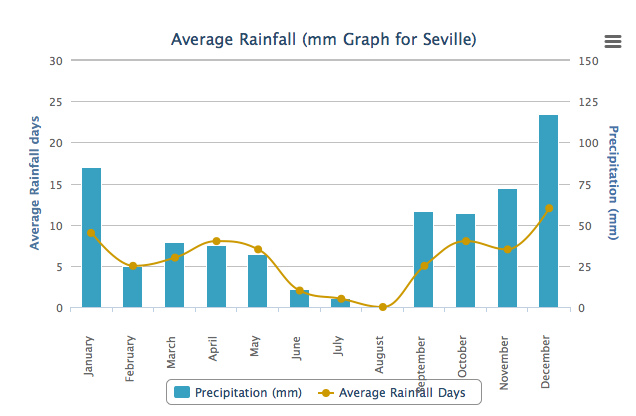



000off_HI-TOP SPIN: A USER POV MODEL FOR TURKMENISTAN
Sometimes ideas come from the strangest places. In this case the connection between a Nike hi-top and our Turkmenistan Merry-Go-Round was not immediate to anyone besides WHAT_ricardo. Spin-videography of the 3D printed model using such basic tools such as our office microwave allows for new ways of understanding the project… genius!
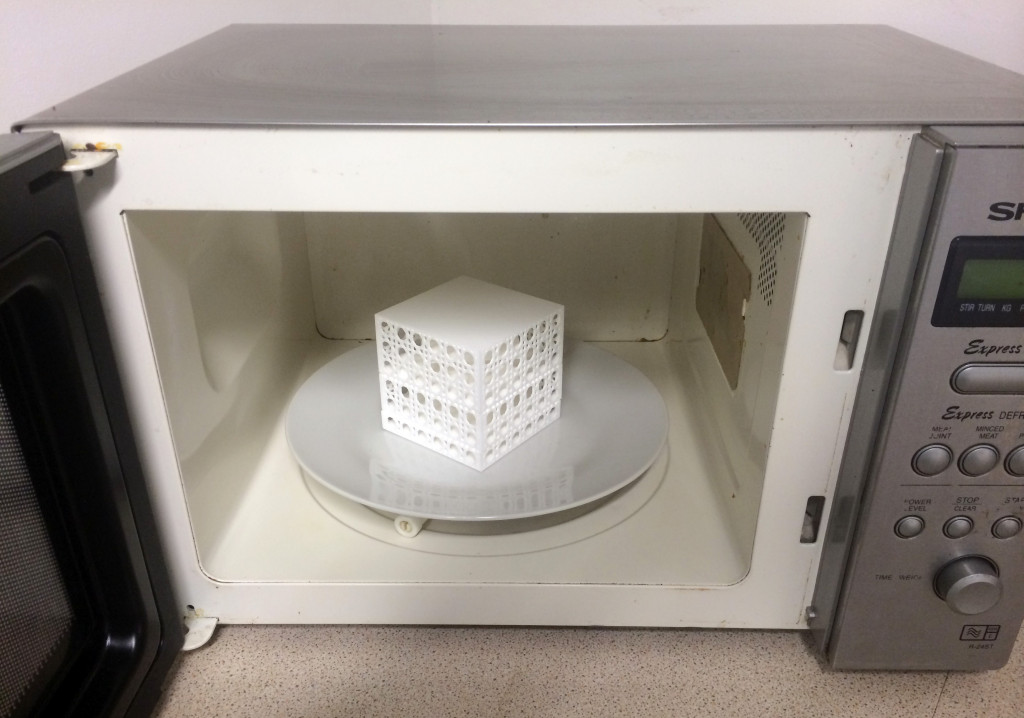
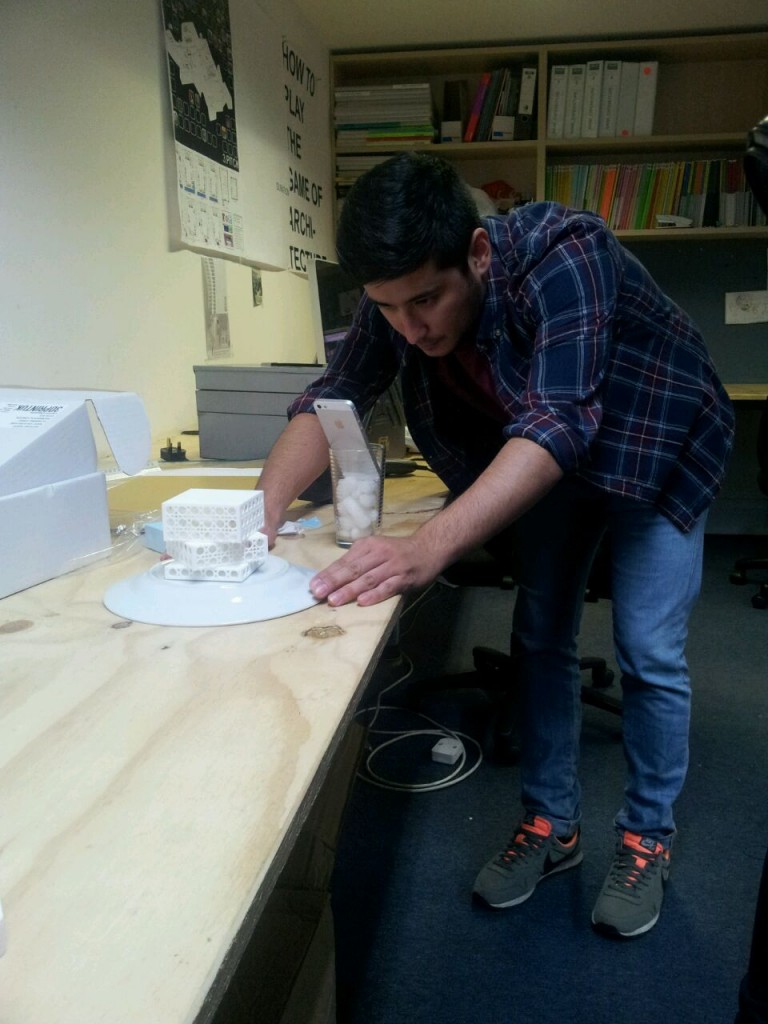



179prs_THE BLABLABLARCHITECTURE DICTIONARY: aka lexi-con
THE BLABLABLARCHITECTURE DICTIONARY:
This Dictionary / Lexicon is part of the vocabulary of the practice WHAT_architecture and as such represents a branch of design knowledge. These words emerged and have been coined from our everyday practice, the running of a multi-lingual intern/ational office:
ANTHONY HOETE: Editor.
1:152 SCALE: Accidentally devised by WHAT_antonio, scale 152nd raises a question about the convenience of scales of representation given that the computer can ‘scale to fit’ and we spend much of the day zooming in and out. Planning scales such as 1:1250; plan layout scale such as 1:100 and detail scales such as 1:5 seem to be residues of the scale-ruler and paper.
ARABBI: “arab or a rabbi” a politically contested field, such as that of the Arab-Jewish conflict, which provides a metanarrative for any design actions which might occur within the field.
ARCHITECTING: to practice (noun) architecture has resulted in the protection of the word ‘architect’; but to practise (verb) architecture means to privilege doing over being an architect. To facilitate architecture, WHAT_architecture suggests ‘architecting’as a unlegislated mechanism to practise Architecture//::00.
BARKITECT: 000off_The absurdity of Chiba, the office dog, as architectural critic.
BOULDERGARIA: Project 192bul_Bouldergaria is an office-leisure centre for a Bulgarian rock climbing company. Bouldergaria is a ‘climbing building’ and is part rock, part architecture. Young and old can scale, ascend, absail, traverse, claw, move and climb all over The Climbing Building. In the middle of the building is the Rock Garden, a green coutyard that provides fresh air, ligt and views to the surrounding offices. The Climbing Building is set within a man-made play landscape – the largest artificial boulder park in the world!
CPR CPD: C is for Continuing. Continuing Life: CPR. On the way to a CPD at work, I came across a morning rush hour scene: a cyclist had been hit by a vehicle… I couldn’t remember what CPR stood for (Cardiopulmonary Resuscitation) let alone remember what to do. We forget the big issues sometimes are bigger issues than we are spending our attentions on.)
DISA/POINTING: (origin Keith Knight): “Pointing is often replaced unnecessarily when the original mortar is still sound. This can result in the new mortar appearing more visually dominant that the brick or stone in the wall. Furthermore new pointing can also water evaporation passages.”
EASTENDBUL: The name of a project, 256meh, in the East End of London for a Turk-Kurdish family that originally emigrated from Istanbul.
EVI:DEFENCE: 179prs_a proposition is a defended manifesto. Evidence as defence.
FEESABIILITY: the ability of a client / project to pay fees.
FUNOLOGY: a strategy to put the fun back into functionality!
GAMETEUR: a non-professional amateur game player.
HILLDING: Landscape integrated architecture, in the example of 000hil_ the sports hall was buried in the side of the hill with its roof a grassed football field.
HOME-A-SEXUAL: a straight person leading a domestic lifestyle which could be perceived as being ‘gay’… this could be by taste / fashion, childlessness, being camp or a million other social constraints which veer away from societal idealism of conjugal bliss.
HORITAGE: (‘hor.i.tidz), n, ‘Hori’ is a transliteration of the name George into Maori and later was frequently used to designate an unknown Maori. The word is regarded as offensive. Until say the later part of the 20th Century, many aspects of Maori indignity lacked cultural recognition in mainstream NZ society e.g. architecture. The word ‘Horitage’ is my attempt to reclaim that lost time and furthermore denotes a particularly Maori understanding of conservation as distinct from that of European. For Maori, heritage is alive; for European, heritage is more akin to preservation: artefacts cryogenically frozen in time, arranged and displayed in wunderkabinets. Maori culture decolonizes conservation. This is Horitage: see 072hin_
INTERN/ATIONAL: the WHAT_architecture ‘flat business model’ is similar to the tech-start companies which also share its ‘silicon roundabout’ location.
INTERNOMICS: WHAT_architecture financial survival through empowering emerging students.
KA PAI CHART: refer 072hin_ when survey results engineer a good result.
KIWIMUNITY: the diaspora. refer 072hin_
MAORITIME:Derived from the idea of a Maori martime tradition of which canoes (waka ) which are embedded in my geneology and identity,. My canoe / waka is Mataatua. Maori Maritime horitage means waka today are still put in the water and used unlike British Maritime heritage which puts boats such as the Cutty Sark in dry docks, cryogenically freezing them.
MIMARLIMAK: Turkish for the emerging English verb: Architecting. Refer 181man_ managé near the Black Sea and 105mos_ mosque in Istanbul.
MINI-SKIRTING: Reductive approach to floor versus wall moldings often with the Modernist ambition to decrease decoration through abstraction.
MOST-PODERNISM: Refer 129fil_programming an existing industrial historic space with dissolved modernist domestic elements – manifest as three pods. Each pod houses private events – sleeping, washing – whilst the external spaces outside the pod houses the public events of domesticity – cooking, dining, lounging so as to maximise living opportunities.
OSTRICHSISED: an amalgam of ‘ostrich’ and ‘ostracised’whereby one’s ‘head-in-the-sand behaviour results in their expulsion from the community to which they, perhaps unknowingly, belong. In my interviewing experience, the Architect often demonstrates such behaviour when asked about the influence of his or her contemporaries on their work. Since design has aspirations of innovation and being ‘avant grade’ one has to be first: in this sense lead rather than follow and thus many architects prefer to quote references from another epoch than begrudgingly acknowledge their contemporaries.
PICNICKNAME: 186cze_in recognition of a critical mass of social / informal use which rsults in the renaming of a building: REFER those who picnic on the stairs landings of the RFH = ‘people’s palace’
PHACIAL: 000off_WHAT_architecture players pay office portraiture homage to former 10CC members Godley and Creme’s Cry…’phacial’ (photoshop facials) morphed by Stefanos (who photoshops well).
100% PUERILE: ‘100% puerile’ is my response to the New Zealand Government’s tourism campaign – ‘100% pure’ – which seeks to reinforce the anachronistic colonialist view of NZ as paradise (no snakes even!). Be wary of what you wish for: cleanliness and purity are masks of the underworld such as Swiss cash mountain’s built on financial disclosure.
SALAKITEKTURE: from the Turkish: a seemingly bizarre architecture which might be in fact meaningful.
STADTIUM: 186cze_stadium integrated into its city context
SUPERVIBER: (Martyn Hook) Someone who supervisers using Viber. Meaning they are a long way from what’s going on. Think overview vs details, communication clarity.
URBANISTIC: 186cze_in the style of being urban without actually being urban
VeNZia! The name of the project 253ven_ and aqword play on Venezia and NZ. Venezia (Venice) was where coffee was reputedly introduced into European and NZ has since added design value to coffee through the ‘flat white’, enhancing the barista and bean roasting culture.
YALLABUY: An Arab-London real estate slang from the Anglo-Arab slang YallaBye




